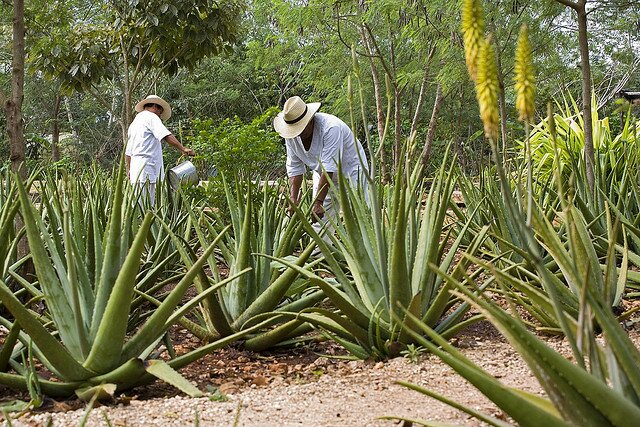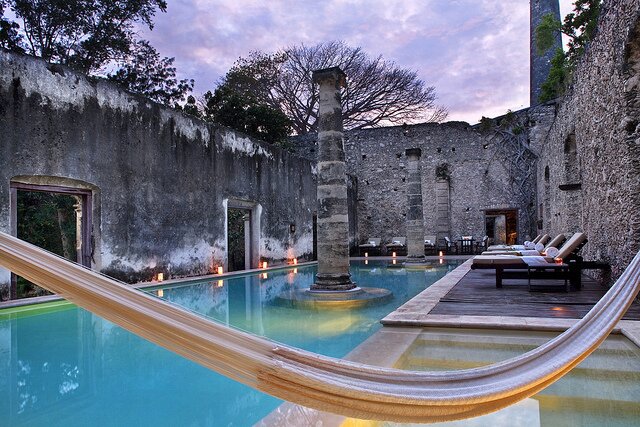Vea esta publicación en español.

There are many reasons to visit Mexico: its beautiful white sand beaches and turquoise waters of the Caribbean; on the other coast, the Pacific embellished each year with impressive gray whales; its towering mountains covered with green forests rich in biodiversity; the Aztec and Maya legacies that live on in wonderful archaeological ruins; the exquisite cuisine; and, last but not least, beautiful colonial cities and majestic haciendas, which have gained much fame among tourists.
Haciendas started to spring up in Mexico in the 17th century, mainly in eastern and southeastern Mexico: in Jalisco, Yucatan, Hidalgo, Campeche, Puebla and Tlaxcala. They started as strategic points for local and regional farm markets in areas that were rich in natural resources and had an available work force. These large, grand houses played a key role in the history and economy of Mexico during Spanish colonization as places where agribusiness was negotiated. Some specialized in producing livestock, sugar, cocoa, coffee, grains, agave or other crops.
Despite the passage of so many years, more than a hundred "hacienda farms" remain in operation in these regions, and many have even continued their agricultural activities, complete with the charm and traditions of rural Mexican life. Recently, in order to leverage their natural, historical, and cultural wealth, many owners of these colonial buildings have chosen to rehabilitate them and turn them into luxury hotels.
The haciendas have opened their doors to tourists interested in rural tourism, history, and reveling in splendid colonial architecture. Upon arriving at a farm, the visitor is greeted by a huge house with spacious gardens and terraces, pools, stone fountains, chapels and monasteries, and charming décor with antique details. Its corners are filled with stories of the past and impressive histories. If you look carefully, it is even possible to stay in homes where important conquerors and public figures of the era slept, such as Hernán Cortés, Emperor Maximilian, General Santa Ana, Pancho Villa, and Emiliano Zapata.
The experience of staying at a hacienda includes a wide variety of entertainment activities related to rural life: horseback riding for several hours from one hacienda to another, visiting bull-fighting arenas and iconic local churches, practicing cattle herding, milking cows, taking classes for a famous sport called charro, horseback riding and lassoing, and of course, enjoying typical rural Mexican food.
But there are also options for adventure tourists or those seeking modern comfort and facilities. In the areas surrounding many haciendas, you can take tours on bicycles or all-terrain vehicles, go rappelling or zip-lining, or simply relax in modern spas that include traditional hot baths called temazcal.
Also, many haciendas are also located near pre-Columbian sites and indigenous communities where you can appreciate another rich historical, architectural, and cultural legacy of Mexico.
With such varied opportunities, it is no wonder why tourists are turning their gaze to the haciendas of Mexico. These sites have become preferred destinations for weddings, corporate events, and even sets for movies.
At SustainableTrip.org we have a superb list of Mexican haciendas that also offer a sustainable tourism experience. Get to know them all and decide which ones will be a part of your next vacation:




